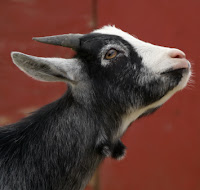 Last week I promised more on how I sold my first article--and how, maybe, you might do the same. I followed my advice from last week: studied my target market, kept my eyes open for cool ideas, and wrote my article with a similar sample article close at hand.
Last week I promised more on how I sold my first article--and how, maybe, you might do the same. I followed my advice from last week: studied my target market, kept my eyes open for cool ideas, and wrote my article with a similar sample article close at hand.Now for the specifics. I had just started the Institute for Children's Literature writing course. That meant I had a pile of great reference material and not enough writing to do, because the first few assignments were too short and simple to offer much challenge. (It's a fantastic course, I just didn't click with the first (read beginner) assignments.) So, being me, I read ahead.
I learned that nonfiction is easier to sell than fiction, so I spent time studying sample articles collected in one of the ICL publications. I particularly loved one from Highlights: "Watching a Bee Keeper" by Joan Davis (http://www.dpi.state.nc.us/docs/accountability/testing/eog/g5/ReadingSamples/Gr5WS6beekeeper1615.pdf). It was written in an appealing conversational style. Its story-like format draws in the reader--guerrilla educational reading.
I thought I could write an article like that--if I had a topic.
The next step took a bit longer: I kept a lookout for news that would catch hook a second-grader. I found what I needed when I passed a herd of goats chomping weeds along a nearby bike path. A story!
Over the next months, I performed hours and hours of research, visited the goat ranch, interviewed the goat herder, wrote the article, and polished, polished, polished. I compared it, paragraph by paragraph, with the “Bee Keeper” article. I compared the amount of time I spent on description versus education. I looked at sentence lengths, word choices, point of view. I gave it to my critique group. Finally, I rewrote the article twice based on much-studied comments from Highlights’ editors.
Want to break into the magazine market? Find a publication you love and study, study, study. When you learn what the magazine likes, you’ll be able to write for them.
:) Cheryl
No comments:
Post a Comment